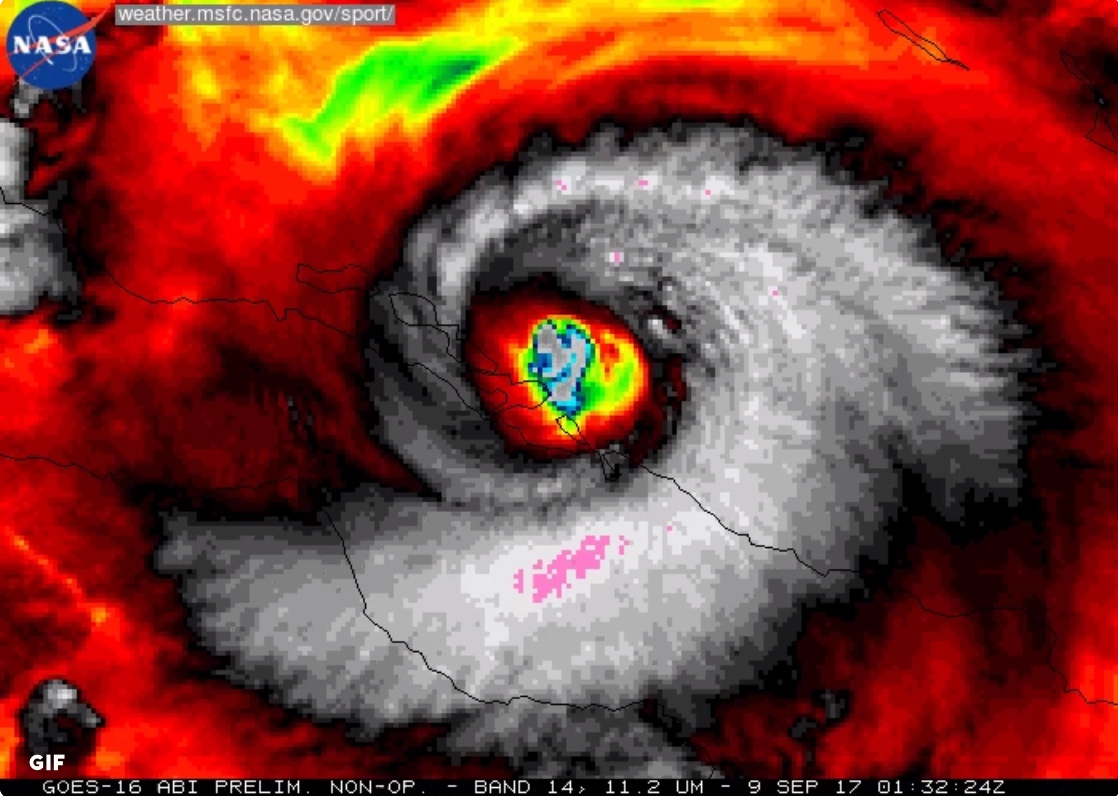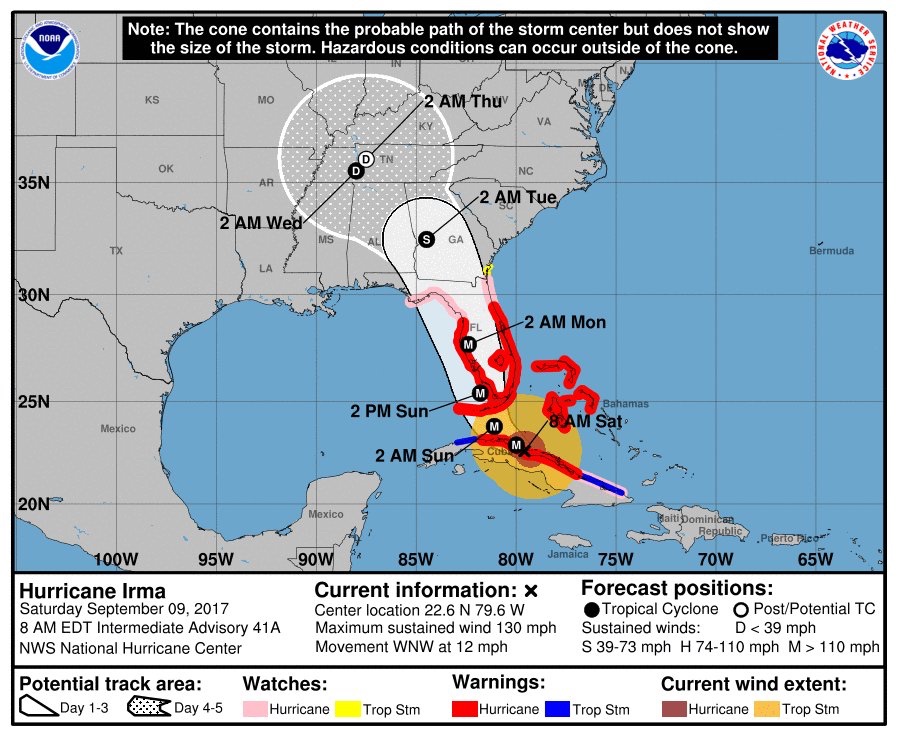Hurricane Irma Barrels Toward Florida; Nowhere in FL Keys Safe

Hurricane Irma weakened a bit as it delivered a hard blow to the north coast of Cuba Friday night and into this morning (Sept. 9), but experts anticipate the now-Category 4 hurricane will re-strengthen before slamming into the western half of the Florida Peninsula.
As of 8 a.m. ET, Hurricane Irma, packing maximum sustained winds of 130 mph (209 km/h), was about 225 miles (365 km) south of Miami and moving west at 12 mph (19 km/h). Miami-Dade County is already feeling the outer parts of the storm, according to the National Weather Service. "Expect damaging winds and heavy rain," the NWS tweeted, regarding Miami-Dade. [Hurricane Irma: Everything You Need to Know About This Monster Storm]
Irma now appears to have the Florida Keys in its crosshairs, with the NWS Key West tweeting last night: "NOWHERE IN THE FLORIDA KEYS WILL BE SAFE*** ***EVACUATE NOW."
The NWS is urging everyone in or near the predicted path of Irma, a 400 mile-wide (645 kilometers) storm, to take this storm seriously. (Florida is about 120 miles, or nearly 200 km, wide.)
The core of Irma will continue near or over the north coast of Cuba this morning and is expected to reach the Florida Keys Sunday morning. By Sunday afternoon, Irma is forecast to be near the southwest coast of the Florida Peninsula.
Irma is "expected to remain a powerful hurricane as it approaches Florida," the National Hurricane Center said.
The Federal Emergency Management Agency (FEMA) has a list of shelters for those under evacuation orders.
Get the world’s most fascinating discoveries delivered straight to your inbox.
Here are several ways you can prepare for a hurricane.
Originally published on Live Science.
Jeanna Bryner is managing editor of Scientific American. Previously she was editor in chief of Live Science and, prior to that, an editor at Scholastic's Science World magazine. Bryner has an English degree from Salisbury University, a master's degree in biogeochemistry and environmental sciences from the University of Maryland and a graduate science journalism degree from New York University. She has worked as a biologist in Florida, where she monitored wetlands and did field surveys for endangered species, including the gorgeous Florida Scrub Jay. She also received an ocean sciences journalism fellowship from the Woods Hole Oceanographic Institution. She is a firm believer that science is for everyone and that just about everything can be viewed through the lens of science.



